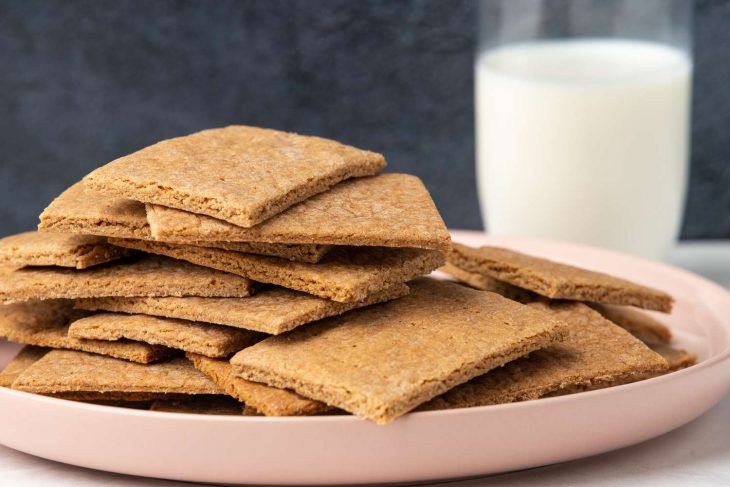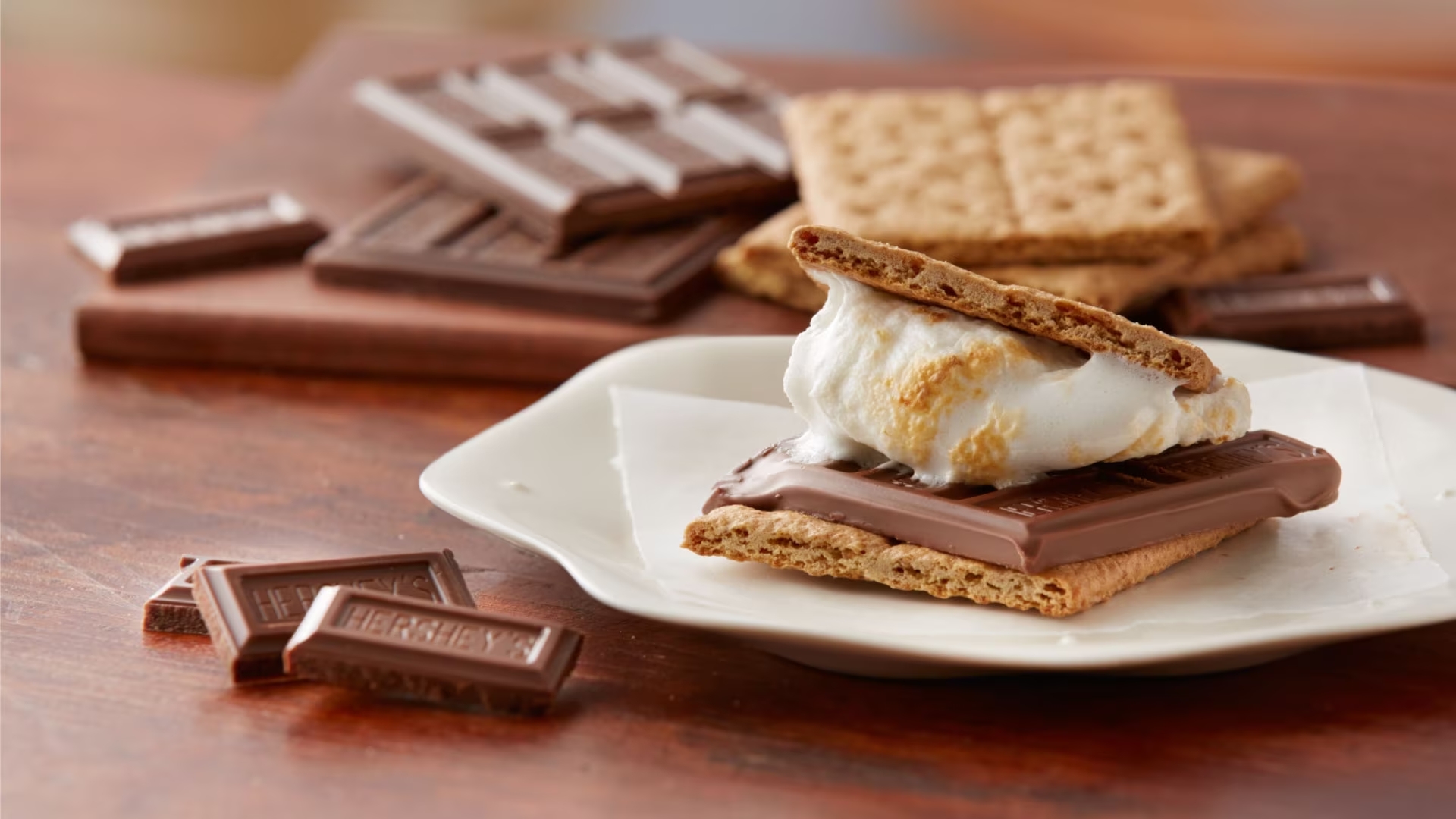
Graham crackers are a beloved treat that has been enjoyed by generations. Whether enjoyed on their own, used as a key ingredient in desserts, or combined with other delicious toppings, graham crackers offer a delightful combination of sweetness and crunch. But what exactly are the nutritional benefits of this tasty snack? In this article, we will uncover 15 fascinating nutrition facts about graham crackers. From their ingredients to their health benefits, we’ll delve into the world of graham crackers and explore why they have become a staple in many households.
A Wholesome Heritage
Graham crackers were invented by Sylvester Graham, a Presbyterian minister in the 19th century. He believed in the importance of a healthy diet and created the original recipe using whole wheat flour and other natural ingredients.
Nutritional Composition
Graham crackers are made primarily from whole wheat flour, which provides a good source of dietary fiber and essential nutrients. They are also typically sweetened with molasses or honey, adding a touch of natural sweetness.

Fiber Powerhouse
Whole wheat flour used in graham crackers contains a higher fiber content compared to refined white flour. Fiber is essential for digestion, helps regulate blood sugar levels, and promotes a feeling of fullness, making graham crackers a satisfying snack choice.
Energy Boost
Graham crackers are a source of carbohydrates, which are the body’s primary source of energy. They provide a quick and convenient way to fuel your body and sustain energy levels throughout the day.
Essential Minerals
Graham crackers contain important minerals, including iron and magnesium. Iron is crucial for the production of red blood cells, while magnesium plays a role in maintaining proper nerve and muscle function.
Lower Fat Content
Compared to many other sweet snacks, graham crackers generally have a lower fat content. This makes them a healthier option for those looking to indulge in a treat without excessive amounts of added fats.
Portion Control
Graham crackers are typically portioned into individual squares, making it easier to control serving sizes. This can be helpful for those mindful of calorie intake or following specific dietary plans.
Versatile Snack
Graham crackers can be enjoyed on their own or used as a base for various recipes. They serve as a versatile ingredients in desserts like pie crusts, cheesecakes, and s’mores, adding a delicious crunch and flavor.

Dip and Spread Companions
Graham crackers pair well with a variety of dips and spreads. They can be enjoyed with peanut butter, chocolate-hazelnut spread, or even cream cheese. These combinations offer additional flavors and textures to enhance your snacking experience.
Kid-Friendly Snack
Graham crackers are a popular snack choice for children due to their mild sweetness and appealing texture. They can be included in school lunchboxes, picnics, or enjoyed as an after-school treat.

Allergy-Friendly Option
Graham crackers are often dairy-free, nut-free, and vegan-friendly, making them suitable for individuals with specific dietary restrictions or food allergies.
Digestive Aid
The fiber content in graham crackers can help promote a healthy digestive system. Fiber adds bulk to the stool and aids in regular bowel movements, supporting overall digestive health.
Reduced Sugar Options
In response to the growing demand for healthier snacks, some brands offer reduced-sugar graham crackers. These versions contain less added sugar while still providing the same satisfying taste and texture.
Satisfying Sweet Tooth
Craving something sweet? Graham crackers can satisfy your sweet tooth without going overboard on sugar. Their natural sweetness and enjoyable crunch make them a satisfying alternative to sugary desserts.
Mindful Snacking
Graham crackers can be part of a mindful snacking routine. By savoring each bite and paying attention to the flavors and textures, you can fully enjoy the experience while being aware of portion sizes and overall nutritional intake.
Conclusion
Graham crackers offer more than just a delicious snack. With their whole wheat goodness, fiber content, and versatile nature, they can be a wholesome addition to your diet. From their historical origins to their place in modern-day snacking, graham crackers continue to be a beloved treat for people of all ages. So, next time you reach for a graham cracker, savor the moment and appreciate the nutritional benefits it provides.
Frequently Asked Questions (FAQs)
Are graham crackers gluten-free?
Traditional graham crackers are made from whole wheat flour, which contains gluten. However, there are gluten-free alternatives available in the market made from alternative flour such as rice, corn, or oats.
Can graham crackers be included in a weight-loss diet?
While graham crackers can be part of a balanced diet, portion control is key, especially when aiming for weight loss. Be mindful of your overall calorie intake and include graham crackers as a treat in moderation.
Can graham crackers be part of a diabetic-friendly diet?
People with diabetes can enjoy graham crackers in moderation as part of a well-balanced meal plan. It’s important to consider the overall carbohydrate content and adjust portion sizes accordingly to manage blood sugar levels.
Are there any preservatives in graham crackers?
Different brands may use different ingredients and preservatives in their graham crackers. It’s recommended to read the ingredient list to determine if any preservatives are present. Opting for organic or all-natural options can minimize the use of preservatives.
Can graham crackers be used in a gluten-free recipe?
If you have gluten intolerance or follow a gluten-free diet, there are gluten-free graham crackers available that can be used as a substitute in gluten-free recipes. These provide similar flavor and texture while accommodating dietary restrictions.
Was this page helpful?
Our commitment to delivering trustworthy and engaging content is at the heart of what we do. Each fact on our site is contributed by real users like you, bringing a wealth of diverse insights and information. To ensure the highest standards of accuracy and reliability, our dedicated editors meticulously review each submission. This process guarantees that the facts we share are not only fascinating but also credible. Trust in our commitment to quality and authenticity as you explore and learn with us.
